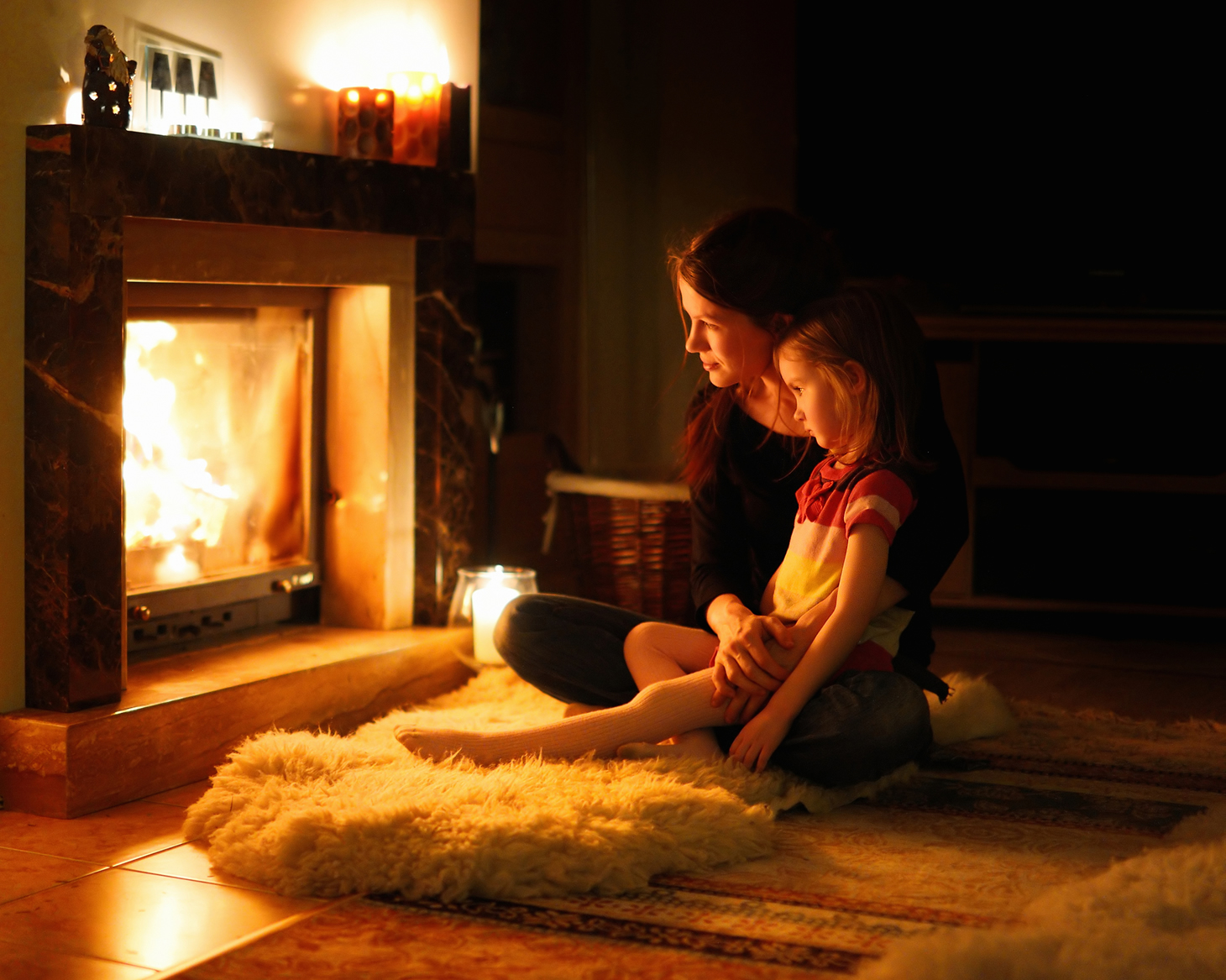How to get more heat from your fireplace or woodstove!
Sitting in front of a fireplace on a cold winter night can be a very comforting and relaxing experience. The warmth of the fire, combined with the soft glow of the flames and the crackling sound of the burning wood, creates a cozy and inviting atmosphere that is perfect for winding down after a long day.
The heat from the fire radiates out into the room, creating a warm and cozy environment that is perfect for snuggling up with a blanket and a good book. The flickering light of the flames can have a mesmerizing effect, providing a peaceful and calming distraction from the stress and distractions of everyday life.
But, it could be just a bit better if your fireplace was burning efficiently and producing maximum heat without creating excessive smoke and coating your fireplace or woodstove glass with creosote.
So, what kind of wood should you be burning to get the best results?
The short answer, kiln-dried or seasoned hardwood, preferably Oak.

Why kiln-dried or seasoned wood?
The heat output of kiln-dried firewood is significantly higher than that of green firewood. This is because kiln-drying removes much of the moisture from the wood, which reduces the amount of energy required to vaporize the water and increases the amount of heat produced by the combustion of the wood.
Kiln-dried firewood typically has a moisture content of around 15% or less, while green firewood can have a moisture content of 50% or more. The higher moisture content of green oak reduces its heat output because the energy required to evaporate the water takes away from the heat produced by the combustion of the wood.
Additionally, burning green firewood can be more difficult and produce more smoke, creosote, and particulate emissions than burning kiln-dried firewood. This is because the moisture in the wood can interfere with complete combustion, leading to the production of smoke and other pollutants.
In conclusion, kiln-dried firewood provides a higher heat output, is easier to burn, and produces less smoke, creosote, and particulate emissions than green firewood. If you are looking for an efficient and clean-burning source of heat, kiln-dried firewood is a good choice.
Why Hardwood?
- Efficient heating: Hardwoods such as oak, maple, and cherry burn hot and provide more heat per unit of wood compared to softwoods like pine and cedar. This makes hardwoods more efficient as a heating source.
- Long burn time: Hardwoods have a high density, which means they burn longer than softwoods, providing a sustained source of heat.
- Good for indoor and outdoor use: Hardwoods produce minimal smoke, which makes them ideal for indoor use in fireplaces and wood stoves. They also produce little creosote, which reduces the risk of chimney fires.
- Aesthetically pleasing: Hardwoods have a pleasant aroma when burned and provide a warm, inviting ambiance.
- Environmentally friendly: Hardwoods are a renewable resource, and when sustainably harvested, they can be a carbon-neutral heating option.
- Good value: Although hardwoods are typically more expensive than softwoods, they provide more heat and last longer, making them a good value in the long run.
Why Oak?
In general, oak is considered a high-heat producing hardwood, with a heat output that is comparable to or slightly higher than that of other hardwoods such as maple or cherry. The exact heat output will vary, but a rough estimate is around 25 million BTUs per cord of oak wood.
Don't forget about your chimney!
It's always a good idea to have your chimney cleaned and inspected by a professional before using your fireplace or wood stove, especially if you plan on burning oak or any other hardwood. This will help ensure that your appliance is functioning properly and safely, and will also give you a better idea of its heat output.
It is recommended to have your chimney cleaned at least once a year if you burn wood regularly. More frequent cleanings may be necessary if you burn a lot of wood or burn green or resinous wood, which can produce more creosote.
